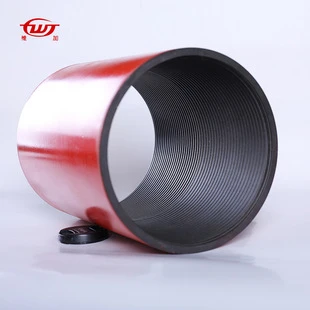- Afrikaans
- Albanian
- Amharic
- Arabic
- Armenian
- Azerbaijani
- Basque
- Belarusian
- Bengali
- Bosnian
- Bulgarian
- Catalan
- Cebuano
- Corsican
- Croatian
- Czech
- Danish
- Dutch
- English
- Esperanto
- Estonian
- Finnish
- French
- Frisian
- Galician
- Georgian
- German
- Greek
- Gujarati
- Haitian Creole
- hausa
- hawaiian
- Hebrew
- Hindi
- Miao
- Hungarian
- Icelandic
- igbo
- Indonesian
- irish
- Italian
- Japanese
- Javanese
- Kannada
- kazakh
- Khmer
- Rwandese
- Korean
- Kurdish
- Kyrgyz
- Lao
- Latin
- Latvian
- Lithuanian
- Luxembourgish
- Macedonian
- Malgashi
- Malay
- Malayalam
- Maltese
- Maori
- Marathi
- Mongolian
- Myanmar
- Nepali
- Norwegian
- Norwegian
- Occitan
- Pashto
- Persian
- Polish
- Portuguese
- Punjabi
- Romanian
- Russian
- Samoan
- Scottish Gaelic
- Serbian
- Sesotho
- Shona
- Sindhi
- Sinhala
- Slovak
- Slovenian
- Somali
- Spanish
- Sundanese
- Swahili
- Swedish
- Tagalog
- Tajik
- Tamil
- Tatar
- Telugu
- Thai
- Turkish
- Turkmen
- Ukrainian
- Urdu
- Uighur
- Uzbek
- Vietnamese
- Welsh
- Bantu
- Yiddish
- Yoruba
- Zulu
casing collar
Understanding Casing Collars Essential Components in Oil and Gas Operations
In the oil and gas industry, casing collars play a critical role in the overall integrity and efficiency of drilling operations. These components, often overlooked, are essential in ensuring that wells are drilled correctly, safely, and economically. In this article, we will explore what casing collars are, their functions, and their significance in well construction.
What are Casing Collars?
Casing collars are specialized fittings that are used in the casing string, the series of pipes that line the borehole of a well. Casing itself serves to protect the well from collapsing, isolate different rock formations, and prevent the migration of fluids between strata. Casing collars, specifically, are used to connect sections of casing and provide a secure interface for different segments of the wellbore.
Typically, casing collars feature both external and internal threads that allow for the connection of casing pipes. Each collar can be placed at various intervals along the casing string, creating a structural reinforcement. They are made from high-strength steel to endure the extreme conditions of downhole environments, such as high pressure and corrosive substances.
Functions of Casing Collars
One of the primary functions of casing collars is to enhance the overall stability of the wellbore
. By providing a robust connection between casing sections, they help ensure that the entire casing string remains intact, particularly during the cementing process. Cementing is a crucial procedure that involves injecting cement into the annular space between the casing and the borehole to secure the casing in place. Casing collars help prevent movement and misalignment during this phase.casing collar

Additionally, casing collars assist in well completion. In operations where multiple casing strings are used, collars can act as guides for tools and equipment used to facilitate drilling, logging, and production. They can also serve as attachment points for downhole equipment, such as packers and control valves, further enhancing well management.
Importance in Production and Safety
The correct installation and use of casing collars are vital for the safety and efficiency of oil and gas operations. Poorly installed casing can lead to well blowouts, spills, or failures, resulting in significant economic losses and environmental hazards. Casing collars contribute to maintaining the integrity of the wellbore under varying pressure and temperature conditions, thus reducing the risks associated with drilling effluents.
Furthermore, casing collars have implications for production efficiency. A well designed to facilitate easy access for maintenance or intervention can lead to reduced downtime and increased productivity. When done correctly, the strategic use of casing collars can optimize well performance and extend the lifespan of the assets involved.
Conclusion
In summary, casing collars are indispensable components in the drilling and completion of oil and gas wells. They provide structural stability, assist in the cementing process, and enhance the efficiency of well operations. As the industry evolves with new technologies and methodologies, the design and use of casing collars will continue to adapt, ensuring that they meet the challenges posed by modern drilling techniques. As we explore deeper and more complex reservoirs, understanding the role of casing collars will remain crucial for ensuring the safety and success of oil and gas exploration and production.
-
Tubing Pup Joints: Essential Components for Oil and Gas OperationsNewsJul.10,2025
-
Pup Joints: Essential Components for Reliable Drilling OperationsNewsJul.10,2025
-
Pipe Couplings: Connecting Your World EfficientlyNewsJul.10,2025
-
Mastering Oilfield Operations with Quality Tubing and CasingNewsJul.10,2025
-
High-Quality Casing Couplings for Every NeedNewsJul.10,2025
-
Boost Your Drilling Efficiency with Premium Crossover Tools & Seating NipplesNewsJul.10,2025







